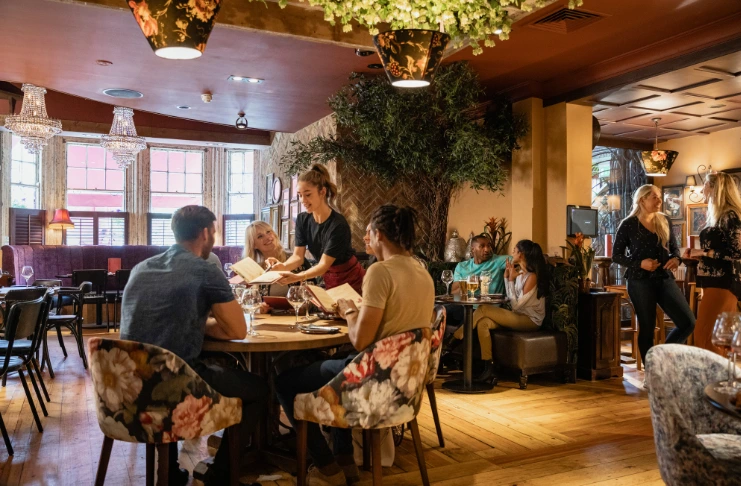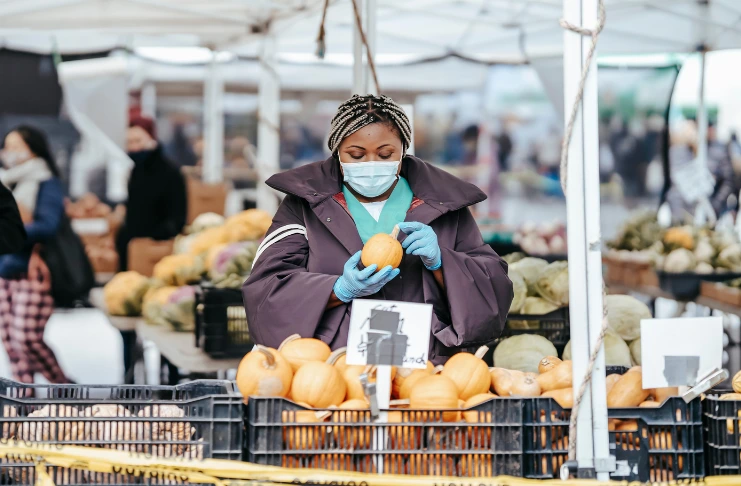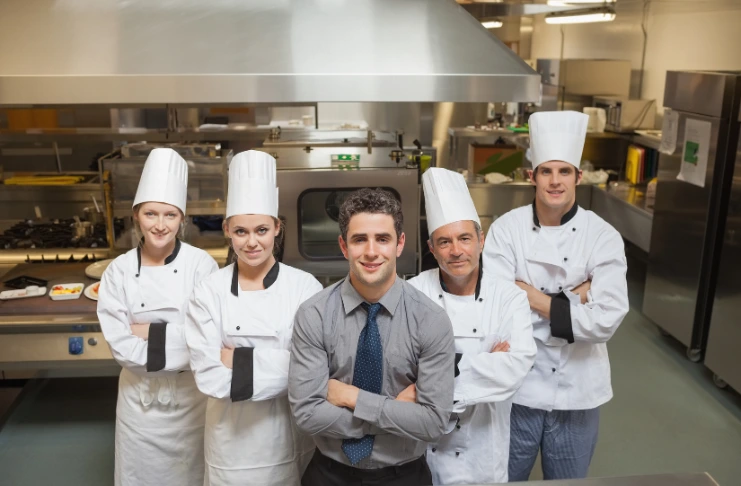
Starting a restaurant business is exciting yet challenging, especially in a competitive market like California. The State of California boasts a thriving restaurant industry fueled by diverse demographics, food tourism, and a rich culinary culture. However, the journey from concept to grand opening is filled with challenges, from navigating permits and regulations to mastering financial planning and California restaurant health inspections.
Whether you dream of opening a beachside taco joint in San Diego or a plant-based bistro in Los Angeles, understanding how to open a restaurant in California is key to turning your vision into a profitable business. This step-by-step guide breaks down everything you need to know—from securing licenses and passing California restaurant health inspections to building a brand that resonates with your local audience.
1. Why Open a Restaurant in California?
The State of California is one of the most lucrative markets in the U.S. for restaurant entrepreneurs. With a population of nearly 40 million people, a booming tourism industry, and a deep appreciation for food innovation, the opportunities are vast. California also leads national trends in sustainability, plant-based menus, and global cuisine, making it a hotspot for food entrepreneurs.
However, opening a restaurant here requires a solid strategy. Regulations vary by city and county, and navigating the state’s extensive licensing, labor, and health requirements can be complex.
2. Research the Local Market
Before jumping into operations, understand your local market. Each region in California has its unique dining trends:
- Los Angeles: A melting pot of cultures and cuisines, L.A. thrives on innovation and mobility, making it ideal for food trucks, fusion menus, and late-night eats. The market values convenience, creativity, and a strong social media presence.
- San Francisco: With a highly discerning, eco-conscious crowd, San Francisco favors locally-sourced, organic, and sustainable dining experiences. Diners here often seek uniqueness, tech integration, and transparency in sourcing.
- San Diego: Known for its beach-town vibe and health-centric population, San Diego diners enjoy relaxed atmospheres, fresh seafood, and globally inspired casual fare. Outdoor dining and scenic ambiance are major draws.
- Sacramento: As the capital of California’s farm-to-fork movement, Sacramento restaurants benefit from proximity to local farms and a customer base that values seasonality and freshness. The community embraces slow food and chef-driven menus.
Do a competitive analysis to identify what kind of cuisine is underrepresented and who your direct competitors are. Research consumer preferences, pricing benchmarks, and delivery expectations in your desired area.
3. Develop a Solid Concept
Your restaurant concept should align with your market research. Define:
- Cuisine Type (e.g., Mexican, vegan, Asian-fusion): Choose a cuisine that suits local preferences and fills a gap in the market, while also reflecting your passion and culinary strengths. Unique or niche cuisines can help differentiate your restaurant in a competitive landscape.
- Service Style (QSR, fine dining, café): Decide how you want to serve your guests—quick and casual for speed, or full-service for a premium experience. Your choice will influence everything from staffing needs to interior layout and pricing strategy.
- Brand Story (What makes your restaurant different?): Craft a compelling narrative around your restaurant’s purpose, inspiration, or mission. A strong brand story helps you connect emotionally with guests and build long-term loyalty.
4. Draft a Business Plan

A clear business plan is critical to starting and scaling your restaurant business. Your plan should include:
- Executive Summary: This section briefly captures your restaurant’s concept, target market, location, and what makes it stand out. Think of it as your elevator pitch to potential investors and partners.
- Market Analysis: Use detailed research to highlight customer preferences, competitor benchmarks, and local dining trends. This proves there’s a demand for your concept and shows you understand your environment.
- Business Model: Outline your main revenue streams—dine-in, delivery, catering, merchandise, or events. Also explain pricing strategy, service flow, and how you’ll maintain profitability.
- Marketing Strategy: Include plans for social media, local outreach, loyalty programs, influencer partnerships, and grand opening promotions. Effective marketing builds visibility and repeat traffic.
- Financial Projections: Detail how much capital you’ll need, how it will be used, and when you expect to become profitable. This includes costs for rent, equipment, permits, staffing, and your projected monthly income.
5. Choose a Strategic Location
Location can make or break your restaurant. Look for places with high foot traffic, ample parking, and a nearby target audience. Conduct a feasibility study to determine expected sales based on location data and population density. Consider:
- Lease terms and zoning restrictions.
- Proximity to competition and complementary businesses.
- Compliance with ADA and seismic regulations (especially in earthquake-prone zones of California).
6. Register Your Business and Legal Entity
Once your concept and location are finalized, legally form your entity. Common structures in California include:
- Sole Proprietorship: The simplest structure, ideal for solo owners, but it offers no separation between personal and business liabilities. It’s easy to set up but risky for high-investment ventures like restaurants.
- Partnership: Suitable for two or more co-owners sharing responsibilities and profits. Clear partnership agreements are essential to avoid conflicts over finances, roles, and exit strategies.
- LLC (Popular for restaurant businesses due to liability protection): Combines the legal protection of a corporation with the flexibility of a sole proprietorship. It shields your personal assets from business debts and lawsuits, making it ideal for most restaurant startups.
- Corporation: More complex and formal, often chosen by larger restaurant groups or those seeking significant investment. Offers strong liability protection but comes with stricter regulatory requirements.
Register your business name with the California Secretary of State and apply for an Employer Identification Number (EIN) from the IRS. You must also register with the California Department of Tax and Fee Administration (CDTFA) to collect sales tax.
7. Obtain the Required Permits and Licenses
Understanding how to open a restaurant in California means familiarizing oneself with local, state, and federal regulations. Here’s a list of permits you’ll need:
- Business License: This license grants legal authority to operate a business in your selected location. Requirements and fees vary by city, so check with your local city hall or business office.
- California Seller’s Permit: Issued by the CDTFA, this permit allows you to legally collect and report sales tax from your customers.
- Health Permit: Granted by your local health department, this permit confirms your facility meets hygiene and food safety standards. You must schedule and pass an inspection before serving food.
- Food Facility Permit: This permit verifies that your kitchen design, equipment, and operations comply with state food code regulations. It’s mandatory before opening your restaurant.
- Fire Department Permit: Required to ensure your restaurant follows fire safety codes, including proper ventilation, extinguisher placement, and safe use of cooking equipment.
- Sign Permit: Required to ensure your restaurant follows fire safety codes, including proper ventilation, extinguisher placement, and safe use of cooking equipment.
- Liquor License (if applicable): Selling alcohol requires a specific license from the ABC. The type of license depends on your restaurant format and whether you serve beer, wine, or spirits..
Remember that health permits and food safety compliance fall under your county’s Environmental Health Department. Before opening a restaurant, you must schedule and pass an inspection.
8. Pass California Restaurant Health Inspections

California restaurant health inspections are rigorous but crucial. These inspections ensure your restaurants adhere to strict food safety and sanitation standards. Inspectors will assess key areas such as:
- Kitchen cleanliness
- Food storage practices
- Pest control
- Employee hygiene
- Waste disposal
- Equipment maintenance
To prepare, it’s essential to train your staff in proper sanitation practices and complete required food safety training. Use commercial-grade cleaning supplies and establish daily logs for refrigerator temperatures, cleaning schedules, and food prep procedures. These records help demonstrate compliance during inspections. Since health inspection scores are made public, a poor rating can negatively impact customer trust and traffic. Stay informed about your local health department’s requirements and re-inspection timelines to ensure ongoing compliance and a positive reputation.
9. Get Certified in Food Safety Training
The state of California requires that at least one person at each food facility have a Food Manager Certification from an ANSI-accredited program. Certifications are valid for five years and are essential for passing inspections and protecting your customers. Additionally, all food handlers must complete California Food Handler Card Training within 30 days of hire. This food safety training covers:
- Personal hygiene
- Time and temperature control
- Cross-contamination prevention
- Cleaning and sanitation
- Pest control
10. Design and Build Your Restaurant
Your restaurant’s layout should be optimized for both aesthetics and operational efficiency. During the design phase, consider:
- ADA Compliance: Federal and California state law require your restaurant to be fully accessible to individuals with disabilities. This includes ramps, wide aisles, accessible restrooms, and clearly marked paths of travel.
- Flow: Design your layout to ensure seamless movement between prep, cook, and service zones. This reduces wait times, improves staff coordination, and enhances customer satisfaction.
- Lighting and ambiance: Use lighting, color schemes, and materials that match your restaurant’s concept—whether it’s cozy, upscale, or fast-casual. Ambience plays a key role in influencing diner mood and repeat visits.
11. Source Equipment and Ingredients
Purchase commercial-grade kitchen equipment that complies with health and safety codes. Choose durable, easy-to-clean equipment for high-volume cooking while ensuring food safety compliance. Energy-efficient models may require higher upfront investment but help reduce long-term utility costs—a smart move in California’s high-cost environment.
When it comes to sourcing ingredients, consistency and quality are key. Work with certified suppliers who meet food safety and traceability standards. Many restaurants in the state of California prefer farm-to-table vendors, local organic farms, and eco-conscious producers to align with consumer demand for freshness and sustainability. Using eco-friendly packaging supports the environment and appeals to the growing base of environmentally aware paying customers.
12. Build a Stellar Team

Labor laws in California are strict, so make sure you’re compliant when hiring:
- Verify employment eligibility with I-9 forms.
- Understand local minimum wage (varies by city).
- Provide mandatory meal and rest breaks.
- Display labor law posters.
Key roles include:
- Executive Chef/Kitchen Manager – Oversees kitchen operations and quality.
- Line Cooks & Prep Cooks – Handle daily food preparation and ensure consistency.
- Servers & Bussers – Deliver excellent customer service and table turnover.
- Front of House Manager – Manages guest experience and team coordination.
13. Invest in Technology
A modern restaurant business in California thrives on efficient tech. Investing in the right tools improves accuracy, speed, and customer retention. Here’s what you need:
- POS System: A modern Point-of-Sale system centralizes transactions, manages inventory in real-time, and provides sales insights to optimize menu and staffing decisions.
- Online Ordering Platform: With high demand for off-premise dining, an integrated online ordering system boosts revenue, reduces dependency on third-party apps, and keeps you connected to customers directly.
- Reservation Tools: Reservation platforms help manage table bookings, reduce wait times, and improve guest satisfaction through seamless dining experiences.
- Loyalty Program Software: Implementing digital loyalty tools encourages repeat visits and larger orders by offering personalized rewards, discounts, and promotions.
14. Launch and Market Your Restaurant
A strong launch strategy sets the tone for your restaurant’s brand and builds anticipation in the local community. Use a mix of digital outreach and real-world promotions to create excitement for your new restaurant, attract early traffic, and generate word-of-mouth buzz.
- Social Media Campaigns: Leverage visual platforms to showcase your food, behind-the-scenes moments, and team culture. Create countdowns and teaser videos, and engage with local food influencers to build momentum before the grand opening.
- Press Releases: Craft a compelling press release that shares your concept, opening date, and what sets your restaurant apart. Distribute it to food journalists, bloggers, and local media to earn free publicity and coverage.
- Email Marketing: Build an email list through your website or social media and send exclusive offers to early subscribers. This will help drive first-time visits and give your audience a reason to share your launch.
- Grand Opening Event: Host a soft launch or opening party with free samples, live music, or discounts. Invite local influencers, friends, and community members to create buzz and encourage online reviews from day one.
15. Common Challenges and How to Overcome Them
- Regulatory Overload: Navigating California’s complex business, labor, and health regulations can be overwhelming. Hiring a consultant or legal expert helps ensure compliance and avoids costly delays or penalties.
- High Labor Costs: Managing payroll is challenging with rising wages and strict labor laws. Cross-train staff, streamline scheduling, and adopt technology to improve efficiency without compromising service quality.
- Intense Competition: California’s restaurant scene is saturated with diverse concepts and big-name brands. Stand out by emphasizing your unique selling proposition (USP), delivering consistent service, and listening to customer feedback to refine your offerings.
Conclusion
Learning how to open a restaurant in California can be challenging, but it’s achievable with the proper guidance, preparation, and mindset. Every step counts, from complying with California restaurant health inspections and passing food safety training to hiring the right team and launching successfully.
California rewards creativity, resilience, and a passion for great food. If you follow this guide, manage compliance, and stay customer-focused, your restaurant business can thrive in one of the world’s most exciting culinary markets.
Frequently Asked Questions
Startup costs range from $50,000 to $1 million, depending on the type and location of the restaurant.
You’ll need a business license, seller’s permit, health permit, food safety certification, food facility permit, and possibly a liquor license.
Not for a full restaurant, but it may cover a small food cart, home-based business, or ghost kitchen setup.
No, but an LLC provides legal protection. You can also choose a sole proprietorship or corporation.








